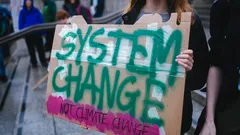147
10
5 minutes
Suggested Articles

First-generation Ivy Leaguers triumph over unique college challenges
Discover key insights, life hacks, and data-driven tips for first-generation college students thriving in prestigious U.S. universities. Find practical strategies, unique challenges, and fresh perspectives essential for student success.

Americans secure their future as Social Security and Medicare reshape retirement
News & Updates

Seniors and families boost peace of mind by mastering Medicare surprises
News & Updates

Educators warn Head Start exclusion leaves undocumented children behind
Civic Education

Inside the immigration reform battle that’s reshaping America’s future
News & Updates

Federal funding delays threaten vital support for US students and schools
News & Updates

Families and neighbors rediscover unity as they break political silence together
Civic Education

Families face hard choices as new rule narrows Head Start access for immigrant children
News & Updates

United Nations calls climate change “the biggest global threat of our time”
Civic Education

Funding freezes put affordable childcare and adult education at risk
News & Updates

The US States with the Lowest Employment Rates: New Data Insights
News & Updates

First-generation Ivy Leaguers triumph over unique college challenges
Hiring

Americans brace for possible Social Security cuts that reshape retirement
News & Updates

Why this Florida data leak changes how we think about privacy
News & Updates

Build your own AI chatbot and unlock hands-on tech superpowers
Resources & Tools

California workers secure jobs this summer with new 2025 laws
Hiring

Office power plays backfire and cost careers faster than you think
Hiring
 Love Women Vibes
Love Women Vibes

Comments